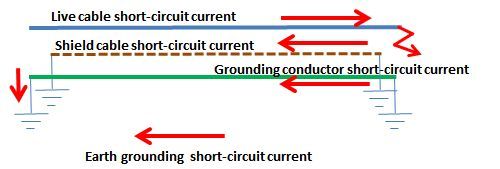mastergate
Electrical
Dear all
I need your help for 2 issues :
1/ To order MV cables, please advise how to specify short circuit withstand capacity on cable metallic screen.
What I have at this stage, is the preliminary calculation of max short circuit value (for example 40kA @ 10kV level) which I use in equipement and cable (core) selection.
2/ For interconnection between 2 substations, is it mandatory to provide a separate MV cable for equipotential earthing?
for example, for a feeder with 2c x 1x300 mm2 per phase (Copper core, XLPE insul, 12/20kV). Do I have to foeresee a separate PE cable (of 1x300 mm2 ?) or are the cables' metallic screens sufficient for this purpose?
Thank you.
I need your help for 2 issues :
1/ To order MV cables, please advise how to specify short circuit withstand capacity on cable metallic screen.
What I have at this stage, is the preliminary calculation of max short circuit value (for example 40kA @ 10kV level) which I use in equipement and cable (core) selection.
2/ For interconnection between 2 substations, is it mandatory to provide a separate MV cable for equipotential earthing?
for example, for a feeder with 2c x 1x300 mm2 per phase (Copper core, XLPE insul, 12/20kV). Do I have to foeresee a separate PE cable (of 1x300 mm2 ?) or are the cables' metallic screens sufficient for this purpose?
Thank you.

